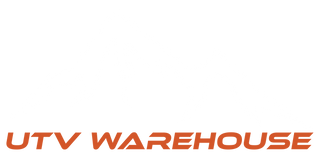Track System Maintenance
Follow this timeline for optimal performance
-
Safety Precautions
Always ensure your vehicle and track system are secure and powered down before any service begins.- Shut off the engine and engage the brake before starting any work.
- Keep hands, feet, and loose clothing away from moving parts.
- Make sure the vehicle is stable and secure before performing maintenance.
- Always wear appropriate protective gear when handling parts.
-
Maintenance Responsibility
Consistent care is essential to keeping your Track System performing safely and efficiently.- Perform regular inspections, lubrication, and adjustments.
- Follow the manufacturer’s maintenance schedule and guidelines.
- Record completed maintenance in a service log.
- The operator is accountable for maintaining the system correctly.
-
Service Intervals and Durability
Your maintenance timing should match how and where you use your Track Systems.- Increase service frequency under heavy or harsh conditions.
- Regular evaluation ensures reliability and performance.
- Adjust recommended intervals based on inspection results.
- Routine maintenance extends the lifespan of your equipment.
-
Cleaning and Handling
Proper cleaning prevents contamination and premature wear of components.- Avoid concentrated water pressure on seals or bearings.
- Clean rubber parts, caps, and seals carefully.
- Do not use chemicals or solvents that damage materials.
- Allow all cleaned parts to dry completely before reassembly.
-
Component Checks and Replacements
Inspect every component carefully for damage or signs of wear before reusing.- Examine bearings, stabilizers, and fasteners for defects.
- Replace any cracked or deformed rubber or metal parts.
- Always use new bolts and washers when reinstalling components.
- Add 8–10 cc of 80w90 oil into the hub housing through the oil port.
-
Maintenance Tasks Overview
Regular maintenance involves inspecting, cleaning, adjusting, lubricating, and replacing components as needed.- Inspect all critical parts for cracks, corrosion, or loose fittings.
- Remove all dirt and buildup from exposed surfaces.
- Adjust torque, alignment, and tension per guidelines.
- Lubricate all moving parts according to service recommendations.
-
System-Level Maintenance
A full system inspection checks all structural and functional elements for safe operation.- Look for visible cracks, misalignment, or unusual damage.
- Confirm correct attack angle and vehicle alignment.
- Verify torque values for all structural bolts and fittings.
- Replace any damaged or bent brackets immediately.
-
Wheel and Bearing Servicing
Regular wheel and bearing checks reduce resistance and prevent costly failures.- Inspect every wheel for uneven wear and cracks.
- Replace bearings that grind, stick, or produce noise.
- Clean seals and apply fresh lubricant to maintain sealing.
- Ensure smooth and consistent wheel rotation.
-
Track, Frame, and Sprocket Inspection
Comprehensive inspection keeps all major driving components in balance.- Check tension, surface wear, and track alignment.
- Replace worn track guides, stabilizer cones, or deformed parts.
- Clean and lubricate hub seals to maintain bearing health.
- Replace sprockets showing worn or sharpened teeth.
-
Lubrication and Longevity
Regular lubrication ensures your Track System operates smoothly and reliably over time.- Apply approved grease or oil to all lubrication points.
- Clean fittings before adding new lubricant.
- Keep seals and bearings properly greased to avoid wear.
- Maintain consistent lubrication schedules for long-term durability.
